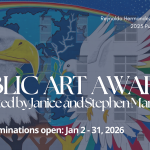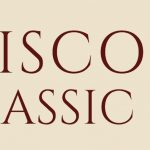Fine Arts Quartet, with guest cellist Robert Cohen
A great string quartet is a complex marriage. Four individuals somehow negotiate their differences and arrive at a perfect blend. They work together, travel together, and attend events together. So what happens when a long-time member suddenly dies, as cellist Wolfgang Laufer did last spring? In an interview in June, the quartet’s long-time second violinist, Efim Boico stated, “I feel like I lost part of my body.”
The Fine Arts Quartet has already auditioned numerous cellists and brought in guests for several concerts. Robert Cohen was the guest cellist Sunday (Nov. 7). We don’t know if he is a candidate for a long-term relationship, but his consummate musicianship was apparent. Of course, the blend of sound was not quite what it was last year, as violinists Ralph Evans and Boico had made music with Laufer made music together for close to 30 years. Relative newcomer Nicolò Eugelmi is in his third year with the quartet.
Had I never heard the Fine Arts prior to Sunday, would I have even noticed the imperfect blend? Would I have felt more poignancy than usual in the minor melodies of the Mozart quartet? Sensed anger underlying grief in the Bartók? It seemed, understandably, as if some of the joy had been sucked out of the playing of the long-time quartet members.
Mozart’s String Quartet in D minor, KV 421, opened the program. This is one of six quartets, written between 1782 and 1785, that Mozart dedicated to Joseph Haydn. They players entered soft as silk and swelled into somber chords. Effortless splashes of melody from the first violin danced like sunlight on a dark pool. The cello seemed slightly out of sync in this movement, not quite fitting into the nuanced swells, just a fraction outside the tempo. A feeling of deep sadness overpowered the cascading melodies.
The Menuetto Allegretto introduced a simple dotted rhythm, contrasted by a playful tune in the first violin and expanded into a duet with viola. Suddenly, like clouds blotting out the sun, the music returned to the minor key, accusatory and tense, and ended with a dramatic pause before the last note.
The final Allegro began with the lush softness that comes so easily to this group, the first violin melody floating effortlessly in air. Evans’ ornamentation is subtle and elegant, his trills so rapid they seem not to be fingered technique, but an organic quality of a singing voice. In a perfect blend of instruments, laughter floated over sorrow. Variations passed to second violin and viola in gorgeous tones, light and deep. The first violin introduced a slow version of the melody, and the cello darkened the surface with rapid scales, repeated in the violins. The final variation raced to sudden resolution into a major key, a perfect Hollywood ending.
The pre-concert talk by Stephen Basson focused entirely on Bartók’s 1927 String Quartet No. 3, one of his personal favorites, but a piece the FAQ has not taken up in many years. To make his point, Basson asked how many had heard the piece in live performance more than once, and one person raised his hand.
Basson pointed out the revolutionary modernity of the piece. It is not atonal or twelve-tone in the manner of Schoenberg and other mid-century Modern composers, but an unprecedented synthesis of classical form with genuine folk idioms. He framed the quartet as the composer’s most difficult quartet, both in terms of technique and accessibility. The work is loosely structured in four sections played without pause.
Bartók gave Cohen opportunity to shine. He played the first sustained note, complicated by the entrance of progressively dissonant harmonies in the upper strings. Insistently rhythmic, the piece swirled with contrasting colors and tones connected by rising and falling glissandos. The violin played shrill melody above a thorny bed of harmonic tension in nasal, glassy ponticello, produced by bowing next to the bridge.
The section ended in a series of swooping glissandos, and began again with soft upward slides. The sound became theatrical, dark and moody, like the music we associate with movies. Snatches of tunes from everyday life emerged through the dense texture: children’s games, pillow fights, and squawking birds. Flurries of scales were interspersed with percussive col legno strokes of wood on strings. The musicians negotiated the difficult passages with grace and passion, leaving enough space for the music and audience to breathe. The glissando returned amid percussive, stuttering attacks, followed by a gorgeous cello solo, rephrased and softened in the viola and then by second violin. The high instruments traded glissando passages with the cello, producing a reflective, liquid sound.
The music intensified: cutting, stabbing and bending sound, now sharp, now rotund, a maelstrom of riffles and splinters, anxiety and raw nerves. The piece ended in a dust storm of gathering sound, swirling around an open center of compressed half steps.
After intermission the musicians returned to play Grieg’s Quartet in G Minor, Op. 27. It began with large noble chords, alternating with faux folk melodies. The Romanze brought a soft new beginning and glissando, contrasted by an emphatic Allegro Agitato, providing a weak reminder of the Bartók quartet. It devolved into barbershop quartets alternating with gypsy melodies. The third movement and finale introduced short but beautiful solos in the cello and violin, amid endless repeats and variations on the same small melodies. An unscheduled break occurred when Ralph Evan’s bow suddenly snapped. After a stunned moment of disbelief followed by nervous applause he left the stage and returned with new equipment. The quartet picked up with only a few more lines of the endlessly repeated disconnected motifs, now a lyrical melody, then an insistent scale, finally ending in unison.
The concert took place in the Zelazo Center at the University of Wisconsin-Milwaukee, where the Fine Arts Quartet is in residence. Every seat was filled; admission is free this season, but tickets are required. Arrange them in advance by calling the UWM Peck School of the Arts box office, 414 229-4308.





















